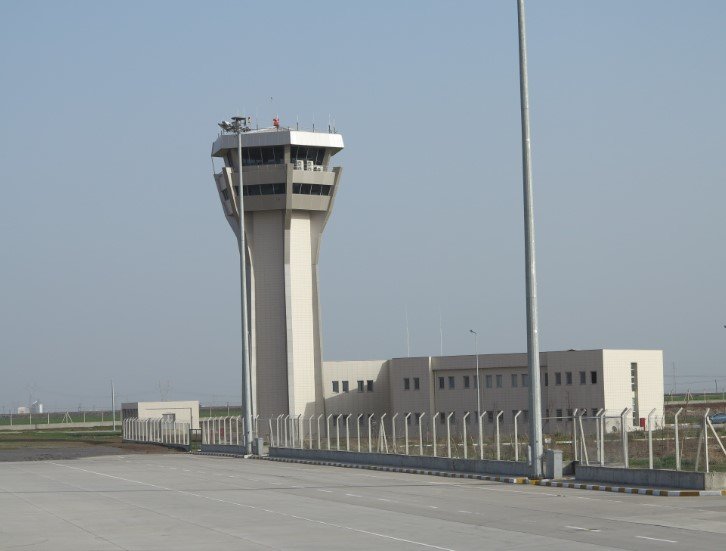Cairo says its airports are fully operational, on high alert to absorb diverted flights from conflict zones
Egypt has declared its airspace safe and fully functional, even as nearby countries face mounting instability amid the Israel-Iran conflict. With regional skies becoming increasingly tense, Cairo is stepping up to offer a lifeline—both logistically and diplomatically.
The Ministry of Civil Aviation announced late Monday that all airports, including Cairo International, are operating normally. No flight restrictions, no chaos. Not yet, at least.
That kind of calm is a big deal in a region where skies can change in minutes.
Regional Tensions Rattle Skies—But Not Cairo
Egypt’s announcement came as the Middle East entered yet another precarious week of uncertainty. Israel and Iran’s ongoing confrontation, already stretching into its second week, has forced several Gulf and Levantine carriers to alter routes or ground aircraft.
But Egypt? Still open for business.
Officials say they’ve activated a “highest state of preparedness” protocol. It’s not just a checklist—it means airports across the country are ready to accept diverted flights, unexpected landings, and additional passenger load if neighboring airspace restrictions kick in more aggressively.
And while other countries have seen temporary closures or reroutes—Lebanon, Iraq, and even parts of Saudi Arabia—Egyptian aviation authorities are broadcasting a different message: come fly here, we’re good.

What Egypt Is Doing Behind the Scenes
It’s not just about keeping planes in the air. It’s about doing so safely, and without turning tarmacs into parking lots.
The Ministry says there’s real-time coordination happening with every airline that operates on Egyptian soil. Think constant comms, live flight monitoring, extra crew rotations. This isn’t reactive bureaucracy—it’s preemptive planning.
-
Cairo International has added extra logistics personnel to monitor incoming traffic
-
Ground services are on standby for unscheduled landings
-
Technical teams are conducting additional maintenance checks before takeoffs
This move comes as part of a larger pattern: Egypt trying to prove itself as a regional stabilizer, not just in politics but in infrastructure. And that includes keeping its aviation sector, one of the region’s busiest, ticking without a hiccup.
Egypt’s Airspace by the Numbers
To understand how big a deal this is, let’s look at Egypt’s aviation footprint. Even on a quiet day, it’s one of the busiest skies in North Africa.
Here’s a breakdown of Egypt’s airspace use in 2024, according to ICAO data:
| Category | Value (2024) |
|---|---|
| Daily Flights Over Egyptian Airspace | 1,450 |
| International Arrivals & Departures | 62.5 million passengers |
| Transit Flights Daily | 800+ |
| Egyptian Airports with Int’l Operations | 11 |
And in 2025, those numbers were already projected to rise by 7-10% before the Israel-Iran war even began.
So keeping the skies open isn’t just a policy decision—it’s a critical economic one.
Cairo Prepares for the Ripple Effect
While Egypt hasn’t been dragged directly into the Israel-Iran standoff, the aftershocks are creeping closer. Already, aviation analysts are seeing a rise in diverted Gulf flights heading westward.
And guess what’s the most stable hub between Riyadh and Rome right now? Cairo.
To prepare for a possible influx, Egypt is using its central operations rooms and crisis units to actively monitor regional shifts. The Ministry of Civil Aviation says they’re working “in full coordination with all relevant national authorities and agencies.”
That’s diplomatic speak for: we’ve got our military, air traffic controllers, and intelligence folks on speed dial.
And they may need them.
Airlines Eye Egypt as a Temporary Safe Harbor
Some airlines—especially European carriers operating long-haul routes to the Gulf or Asia—are already adjusting flight paths to swing further south, through Egypt.
Lufthansa and Air France haven’t publicly confirmed reroutes yet, but flight-tracking data shows their aircraft avoiding the northern Middle East corridor more often than usual.
Even budget carriers like Wizz Air, which serve Red Sea destinations, have kept routes active to Hurghada and Sharm el-Sheikh. That says a lot.
Egypt’s tourism market has taken a beating before from regional instability. But this time, it’s trying to be the anchor. Not the casualty.
Real Risks Still Linger—But for Now, So Far So Good
Let’s be honest: it’s not all sunshine and contrails.
The situation could flip. One errant missile or drone veering westward could change everything. Civil aviation, after all, is built on predictability—and war rarely provides that.
But for now, Egypt is threading the needle. Keeping the skies open, the planes moving, and the global travel industry from completely unraveling.
That’s a rare balancing act in this region. And Cairo seems ready to keep it up—at least as long as the skies let them.
